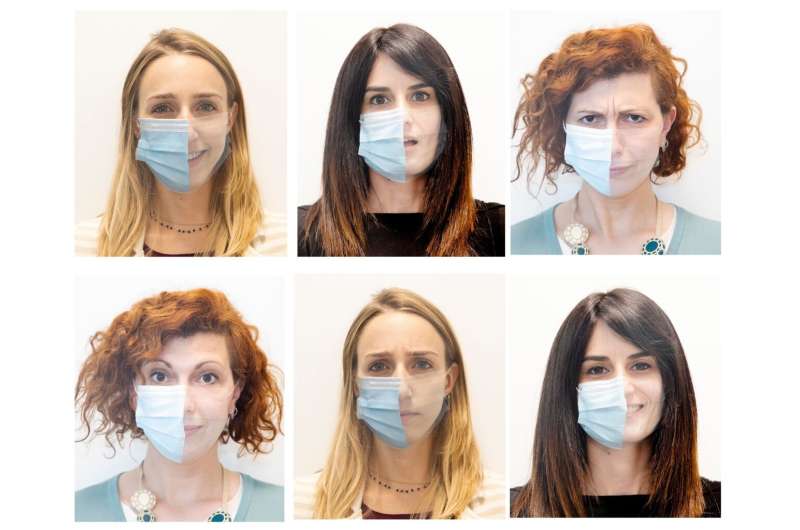
The U-Vip (Unit for Visually Impaired People) research team led by Monica Gori at the IIT- Istituto Italiano di Tecnologia (Italian Institute of Technology) has recently published a study which shows for the first time how children aged from 3 to 5 years old have problems in recognizing the emotions of people wearing surgical masks. This collateral effect of the preventive measures linked to the COVID-19 health emergency could influence the correct development of children’s capabilities of social interaction. The research paper has been published in Frontiers in Psychology.
The use of facemasks for children within the context of the COVID-19 pandemic was a focus of a document compiled by the World Health Organization (WHO) and UNICEF to provide guidance for decision-makers and authorities in public and professional fields, discouraging exposure to the use of facemasks when dealing with children aged up to five years old. In addition, even for older children, WHO recommends giving careful consideration to the benefits of wearing facemasks in comparison with the potential damage that could include social and psychological problems, and difficulties in communication and learning.
The study by the IIT research team led by Monica Gori regards this context, and for the first time it focuses on pre-school age group, and helps define the measures that can be taken to reduce the impact of the use of surgical masks among children. In fact, even though from 3 to 5 years of age wearing facemasks is not mandatory, children are, in any case, exposed to the use of such preventive measures in various everyday social and educational contexts.
The IIT researchers prepared a quiz containing images of people with and without facemasks, and displayed them by computer, tablet, or smartphone to 119 individuals comprising 31 children aged between 3 and 5 years old, 49 children between 6 and 8 years old, and 39 adults between 18 and 30 years old. The subjects, independently or with parental assistance in the case of the youngest participants, were asked to try to recognize the faces’ expressions, with and without facemask, conveying different emotions such as happiness, sadness, fear and anger.
The results showed that children aged between 3 and 5 years old are capable of recognizing facial expressions conveying happiness and sadness on only 40% of occasions when the faces are covered by a facemask. The percentages were higher for other age groups: Children aged 6 to 8 years old (55-65%) and adults (70-80%), but in general, all age groups showed a degree of difficulty in interpreting these emotions expressed while the face was partially covered by a facemask. As regards the other emotions, there were better results, but the age group that finds it hardest to recognize emotions expressed from behind a facemask is that of children in pre-school age.
“The experiment was performed in the earliest phases of the 2020 pandemic, and at that time facemasks were still a new experience for everyone,” comments Monica Gori. “Children’s brains are highly flexible, and at the moment we are performing tests to ascertain whether children’s understanding of emotions has increased or not,” concludes Gori.
“In the study, we worked with children and adults with no forms of disability,” explains Maria Bianca Amadeo, IIT researcher and co-author of the research study. “Of course, these observations are even more important when considering children affected by disabilities.”
“Indeed,” explains Lucia Schiatti, IIT researcher and co-author of the study. “For example, visual impairment implies difficulties in social interaction. For such individuals in particular, it will be even more necessary to concentrate on possible preventive measures or specific rehabilitation activities.”
Source: Read Full Article






